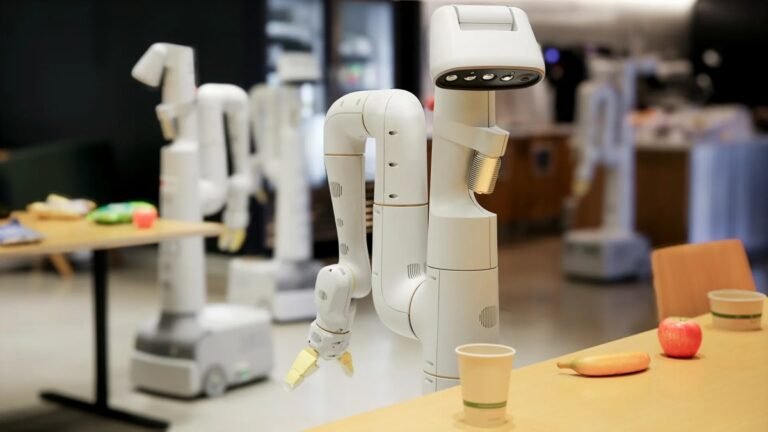
In late December, The New York Times sued OpenAI and its close collaborator and investor, Microsoft, for allegedly violating copyright law by training generative AI models on Times’ content.
Today, OpenAI published a public response in which the startup — unsurprisingly — claims that the case is without merit.
“Interestingly, the regurgitations The New York Times [cite in its lawsuit] appear to be from years-old articles that have proliferated on multiple third-party websites,” OpenAI writes.
The Times is only the latest copyright holder to sue OpenAI over what it believes is a clear violation of IP rights.
Actress Sarah Silverman joined a pair of lawsuits in July that accuse Meta and OpenAI of having “ingested” Silverman’s memoir to train their AI models.

In fact, an April 2023 Arize survey found that 53% of respondents planned to deploy LLMs within the next year or sooner.
The H100 GPU from Nvidia, a popular choice for LLMs, has been selling on the secondary market for about $40,000 per chip.
One source estimated it would take roughly 6,000 chips to train an LLM comparable to ChatGPT-3.5.
That source estimated that the power consumption to run ChatGPT-3.5 is about 1 GWh a day, or the combined daily energy usage of 33,000 households.
Power consumption can also be a potential pitfall for user experience when running LLMs on portable devices.

Google’s DeepMind Robotics researchers are one of a number of teams exploring the space’s potential.
The newly announced AutoRT is designed to harness large foundational models, to a number of different ends.
In a standard example given by the DeepMind team, the system begins by leveraging a Visual Language Model (VLM) for better situational awareness.
A large language model, meanwhile, suggests tasks that can be accomplished by the hardware, including its end effector.
LLMs are understood by many to be the key to unlocking robotics that effectively understand more natural language commands, reducing the need for hard-coding skills.

The New York Times is suing OpenAI and its close collaborator (and investor), Microsoft, for allegedly violating copyright law by training generative AI models on Times’ content.
Actress Sarah Silverman joined a pair of lawsuits in July that accuse Meta and OpenAI of having “ingested” Silverman’s memoir to train their AI models.
As The Times’ complaint alludes to, generative AI models have a tendency to regurgitate training data, for example reproducing almost verbatim results from articles.
And that’s why most [lawsuits like this] will probably fail.”Some news outlets, rather than fight generative AI vendors in court, have chosen to ink licensing agreements with them.
In its complaint, The Times says that it attempted to reach a licensing arrangement with Microsoft and OpenAI in April but that talks weren’t ultimately fruitful.

The plan is for “centers of excellence” to be set up to support the development of dedicated AI algorithms that can run on the EU’s supercomputers, they added.
AI startups are more likely to be accustomed to using dedicated compute hardware provided by US hyperscalers to train their models than tapping the processing power offered by supercomputers as a training resource.
Using its supercomputing resources to fire up AI startups specifically has emerged as a more recent strategic priority after the EU president’s announcement of the compute access for AI model training program this fall.
It’s still early days for the EU’s ‘supercompute for AI’ program so it’s unclear whether there’s much model training upside to report off of dedicated access as yet.
But the early presence of Mistral in the EU’s supercomputing access program may suggest an alignment in the thinking.

SimSpace, a startup that creates digital replicas of organizations’ tech and networking stacks for cybersecurity training, has raised $45 million in a funding round led by L2 Point Management.
And it’s expanding its private-sector customer roster, having shored up contracts with the U.S. Cyber Command, FBI and national cyber defense teams in unnamed U.S.-allied countries.
We’ve had to make hard decisions and to tough it out.”SimSpace’s origins lie in U.S. Cyber Command, where Hutchison designed and led a joint tactical cyber training exercise, Cyber Flag, drawing on the expertise of tech staffer Lee Rossey at MIT’s Lincoln Lab.
At the time, Rossey was working on creating cyber “training ranges” to simulate the IT production environments of companies and critical infrastructure.
“With SimSpace, because training occurs outside of a company’s network, it’s possible to ‘throw the kitchen sink’ at cyber teams without breaking something in an actual production environment and disrupting vital operations,” Hutchison said.

Innovation in clean tech and renewable energy is moving fast — maybe a bit too fast.
The clean tech industry is expected to create 8 million jobs by the end of 2030, according to a recent report by the International Energy Agency.
These numbers are apparently based on current policies, and if more resources go toward the clean energy transition, the report’s authors expect the number to rise, too.
The startup hires and trains folks to install and maintain sustainable heat pumps.
It trains people new to the trades, provides upskilling training to those who have some experience, and has its workers install and maintain equipment for other companies.

Google’s making the second generation of Imagen, its AI model that can create and edit images given a text prompt, more widely available — at least to Google Cloud customers using Vertex AI who’ve been approved for access.
Text and logo generation brings Imagen in line with other leading image-generating models, like OpenAI’s DALL-E 3 and Amazon’s recently launched Titan Image Generator.
These techniques also enhance Imagen 2’s multilingual understanding, Google says — allowing the model to translate a prompt in one language to an output (e.g.
Google didn’t reveal the data that it used to train Imagen 2, which — while disappointing — doesn’t exactly come as a surprise.
Instead, Google offers an indemnification policy that protects eligible Vertex AI customers from copyright claims related both to Google’s use of training data and Imagen 2 outputs.

Combining the power of artificial intelligence with human creativity can be a powerful tool for solving problems. Adept, a startup that has raised $350 million in a Series B funding…

Gemba is an enterprise-focused virtual reality (VR) training startup that has raised $18 million in a Series A round of funding. This new influx of capital will be used to…













